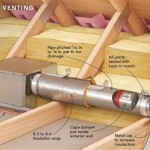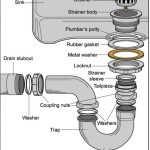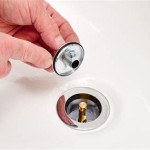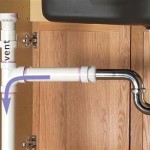Installing a Shut-Off Valve for a Bathroom Sink
Installing shut-off valves for a bathroom sink offers significant advantages, including easier maintenance and preventing potential water damage. This allows homeowners to isolate the water supply to the sink for repairs without shutting off the water to the entire house. This article provides a comprehensive guide to installing shut-off valves under a bathroom sink.
Gathering Necessary Tools and Materials
Before beginning the installation process, gathering the required tools and materials ensures a smooth and efficient workflow. Essential tools typically include an adjustable wrench, basin wrench, pipe cutter or hacksaw, and Teflon tape. Necessary materials comprise two shut-off valves (angle-stop or straight-stop depending on the plumbing configuration), supply lines (typically flexible braided stainless steel), and a bucket or towels for containing water spills.
Turning Off the Water Supply
Locating and turning off the main water supply to the house is paramount before commencing any plumbing work. This prevents uncontrolled water flow during the installation process. The main water shut-off valve is usually located near the water meter or where the main water line enters the house. After turning off the main supply, open the bathroom sink faucet to release any remaining water pressure in the lines.
Disconnecting Existing Supply Lines
Once the water supply is off, the existing supply lines connecting the sink to the water pipes need to be disconnected. Place a bucket under the sink to catch any residual water. Using an adjustable wrench or basin wrench, carefully loosen and disconnect the nuts connecting the supply lines to the sink's tailpieces and the water supply lines extending from the wall. Be mindful of older plumbing, which may require extra care to avoid damage.
Installing the New Shut-Off Valves
With the old supply lines removed, begin installing the new shut-off valves. Apply Teflon tape to the threaded ends of the water supply pipes protruding from the wall. This creates a watertight seal. Screw the shut-off valves onto the threaded pipes, ensuring they are tightened securely with an adjustable wrench but avoiding over-tightening. The valves' handles should be positioned for easy access and operation.
Connecting the Supply Lines to the Shut-Off Valves
Attach the new supply lines to the outlet ends of the shut-off valves. Again, use Teflon tape on the threaded connections to ensure a watertight seal. Tighten the nuts connecting the supply lines to the valves using an adjustable wrench. The supply lines should be long enough to reach the faucet tailpieces without being stretched or kinked.
Connecting the Supply Lines to the Faucet Tailpieces
The final step involves connecting the other ends of the supply lines to the faucet tailpieces. Apply Teflon tape to the threads of the tailpieces. Carefully thread the supply line nuts onto the tailpieces and tighten them securely using a basin wrench. Avoid over-tightening, which could damage the connections.
Testing for Leaks
After all connections are made, slowly turn the main water supply back on. Observe all connections carefully for any signs of leaks. If leaks are detected, immediately turn the water supply back off and re-tighten the connections. If the leaks persist, inspect the connections for damage and replace any faulty components. Once the system is leak-free, turn the shut-off valves to the open position and test the sink's functionality.
Regular Maintenance
While shut-off valves provide a convenient way to control water flow, regular maintenance is essential to ensure their continued proper operation. Periodically inspect the valves for signs of leaks or corrosion. Exercise the valves by turning them off and on a few times a year to prevent them from seizing up due to mineral buildup. This simple maintenance can prevent future plumbing problems and extend the lifespan of the valves.
Considering Professional Assistance
While installing shut-off valves is often manageable for DIY enthusiasts, individuals lacking plumbing experience or encountering complex situations should consult a qualified plumber. A professional plumber possesses the expertise and tools to handle unforeseen challenges and ensure a proper installation, minimizing the risk of potential plumbing issues.

How To Install Shutoff Valves The Home Depot Plumbing Tips

How To Install A Water Shut Off Valve 9 Minutes Home Repair Tutor

How To Install A New Bathroom Water Supply Shutoff Valve

How To Replace A Shutoff Valve Diy Family Handyman

Handle Broke Off On Shut Valve Under Sink Diy Plumbing Repair Bathroom

Install Shut Off Valve Under Sink Replace Faucet Mobile Home Repair

How To Install A Water Shut Off Valve 9 Minutes Home Repair Tutor

How To Install Shut Off Valves The Home Depot

Condo Blues How To Replace Plumbing Valves Without Soldering

How To Replace Shut Off Valve On Cpvc Pipe Замена крана на пвх трубе
Related Posts







